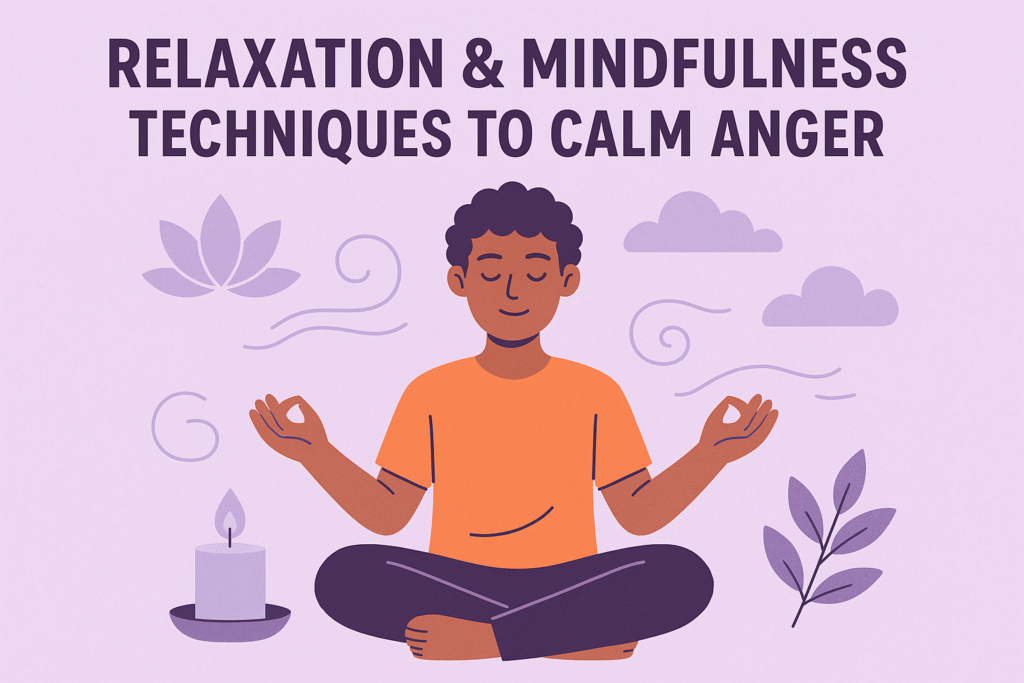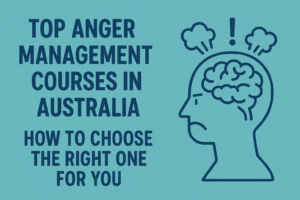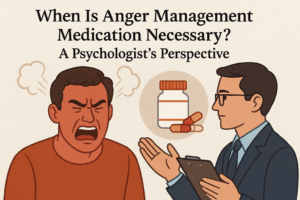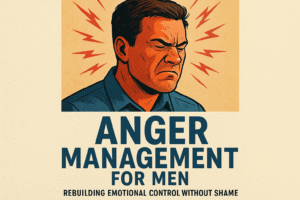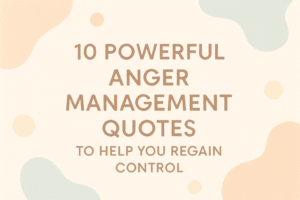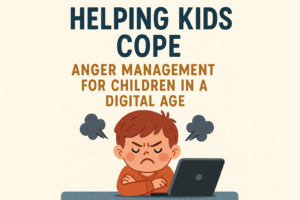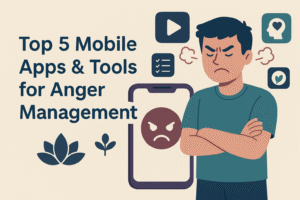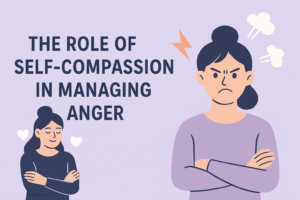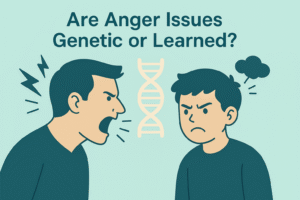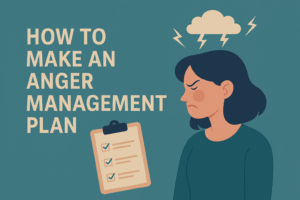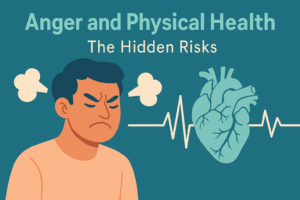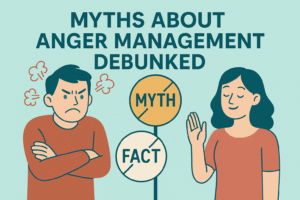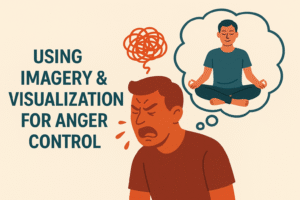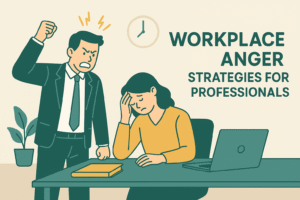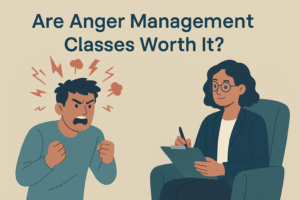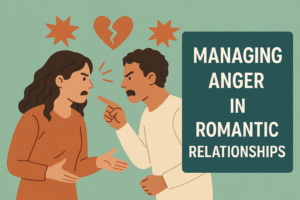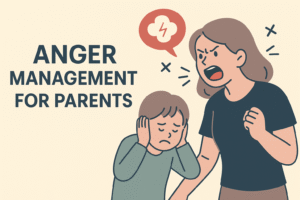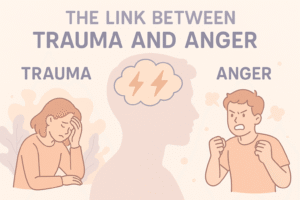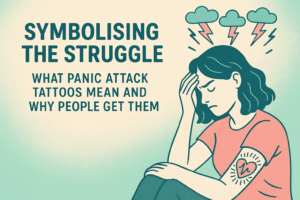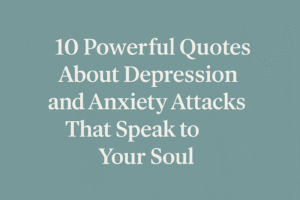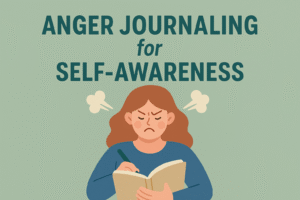Anger is a natural emotion—but when it’s left unmanaged, it can lead to problems in your relationships, work life, and mental health. The good news is that anger doesn’t have to control you. By incorporating relaxation and mindfulness techniques, you can learn to respond to anger more calmly and thoughtfully.
In this guide, we’ll explore practical ways to calm anger using breathing, grounding, progressive muscle relaxation, and daily mindfulness habits that support emotional control.
Breathing and Grounding Exercises
When anger hits, it can feel like a surge of energy taking over your entire body. Your breathing becomes shallow, your heart races, and your thoughts may spiral. This is where breathing and grounding techniques can help. They slow down your body’s stress response and give your mind a moment to pause.
Deep Breathing Exercise
Deep breathing shifts your body out of a fight-or-flight state and into a more relaxed mode. Try this simple exercise:
- Inhale through your nose for 4 counts
- Hold your breath for 4 counts
- Exhale slowly through your mouth for 6 counts
- Repeat for 2–5 minutes
By focusing on your breath, you’re actively redirecting your attention away from angry thoughts.
Grounding Through the 5-4-3-2-1 Method
Grounding techniques are designed to connect you with the present moment. One popular method is:
- 5 things you can see
- 4 things you can touch
- 3 things you can hear
- 2 things you can smell
- 1 thing you can taste
This method helps calm your body and stop anger from escalating. It brings awareness back to the here and now instead of fueling past or future worries.
Role of Progressive Muscle Relaxation
Anger often settles into the body as physical tension—tight shoulders, clenched jaw, or a stiff neck. Progressive Muscle Relaxation (PMR) is a technique that targets this physical tension and helps your body reset.
How PMR Works
- Sit or lie in a quiet space.
- Begin with your toes. Tense the muscles tightly for 5 seconds.
- Slowly release and feel the difference.
- Move up through your body—feet, legs, abdomen, chest, arms, and face.
- Inhale as you tense, exhale as you release.
Practicing PMR consistently helps you recognize when your body is reacting to anger, so you can relax before emotions escalate.
Introduction to Mindfulness
Mindfulness is the practice of observing your thoughts, emotions, and body without judgment. Instead of reacting quickly, mindfulness teaches you to pause and notice what you’re feeling.
How Mindfulness Helps With Anger
Anger is often fueled by fast, automatic thoughts. Mindfulness introduces space between the trigger and your response. This allows time to choose how you want to act, instead of simply reacting.
Some basic mindfulness activities include:
- Mindful breathing – Focus only on your breath for 1–3 minutes.
- Body scans – Gently bring attention to each part of your body.
- Mindful walking – Observe the sensation of your feet, rhythm, and surroundings while walking.
You don’t need to meditate for hours. Even short moments of mindfulness can shift your emotional state.
Daily Routines for Better Emotional Control
Anger is easier to manage when your stress levels are already low. Establishing a calming routine helps prevent emotional overload and reduces reactivity.
Daily Habits That Support Anger Control
- Morning check-in: Take a few minutes to breathe deeply or set an intention.
- Scheduled breaks: Add time in your day to stretch, breathe, or go for a quick walk.
- Evening unwind: Avoid going to bed tense—try light stretching or breathing exercises.
- Mindful meals: Slow down, taste your food, and enjoy quiet time while eating.
The goal is not to eliminate anger entirely, but to respond to it from a calmer baseline. Routines like these build emotional resilience over time.
Combining Techniques Into One Routine
Here’s an example of how you could combine these techniques into a short, daily practice:
- Morning (5 mins): Deep breathing
- Midday (10 mins): Grounding walk or progressive muscle relaxation
- Evening (5–10 mins): Mindfulness or body scan
Practicing these tools regularly prepares your mind and body to stay grounded in high-stress moments. You can have an anger management Therapy with YOP team as well.
Why This Matters
Anger becomes problematic when it feels automatic, overwhelming, or destructive. Relaxation and mindfulness techniques give you tools to interrupt that cycle and regain control.
These methods aren’t about suppressing anger—they’re about managing it constructively. By learning to identify tension early, stay present, and release stress from the body, you can approach situations with more patience and clarity.
Over time, you’ll likely notice:
- Less frequent outbursts
- Improved communication
- Better emotional awareness
- Increased sense of control over your reactions
When to Seek Support
While self-regulation tools are powerful, they’re not always enough. If anger is affecting your relationships, work, or daily wellbeing, it may be helpful to speak with a professional.
At youronlinepsychologist, we offer online support tailored to anger management. Whether you’re exploring mindfulness for the first time or want help creating a daily plan, professional guidance can help you build a path to emotional balance.
Final Thoughts
Learning to calm anger isn’t about avoiding emotion—it’s about changing your relationship with it. With breathing exercises, grounding, progressive relaxation, and mindfulness, you can learn to respond to anger in ways that are healthier and more balanced.
These tools are simple, accessible, and effective when practiced consistently. The more you build these into your routine, the easier it becomes to stay centered—even during life’s most frustrating moments.
If you’re ready to start managing anger with more calm and clarity, youronlinepsychologist can help you take the next step.

